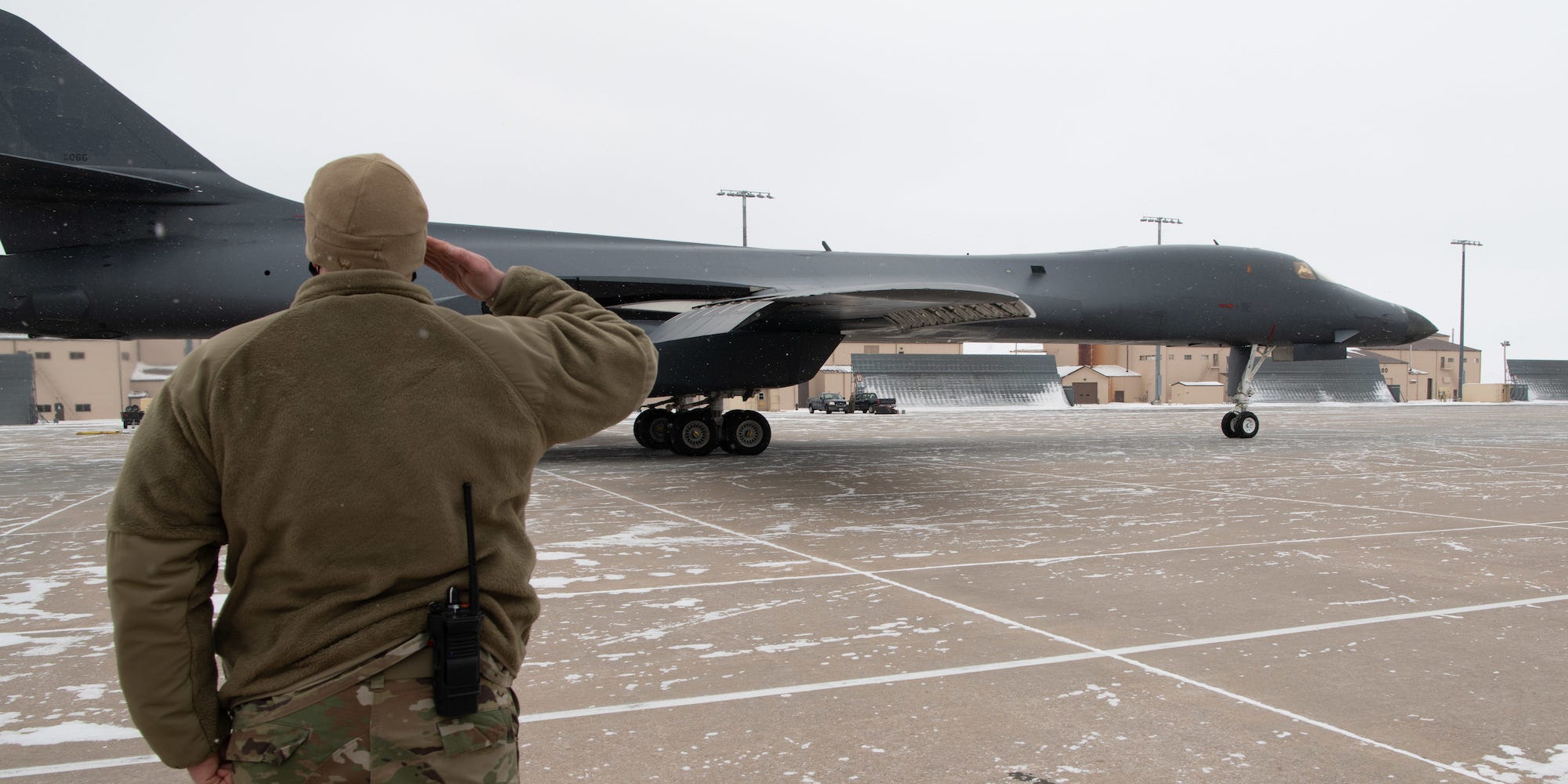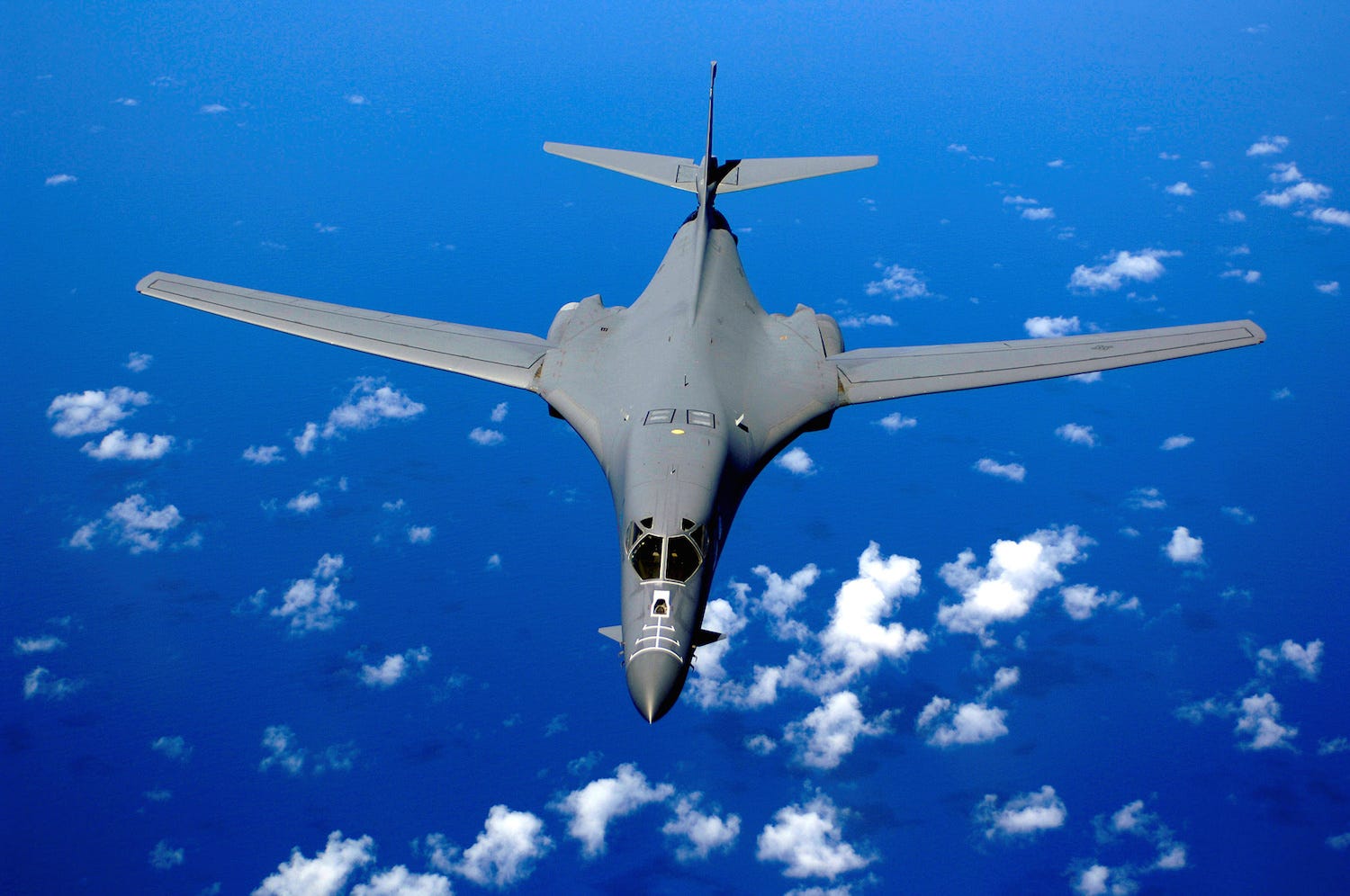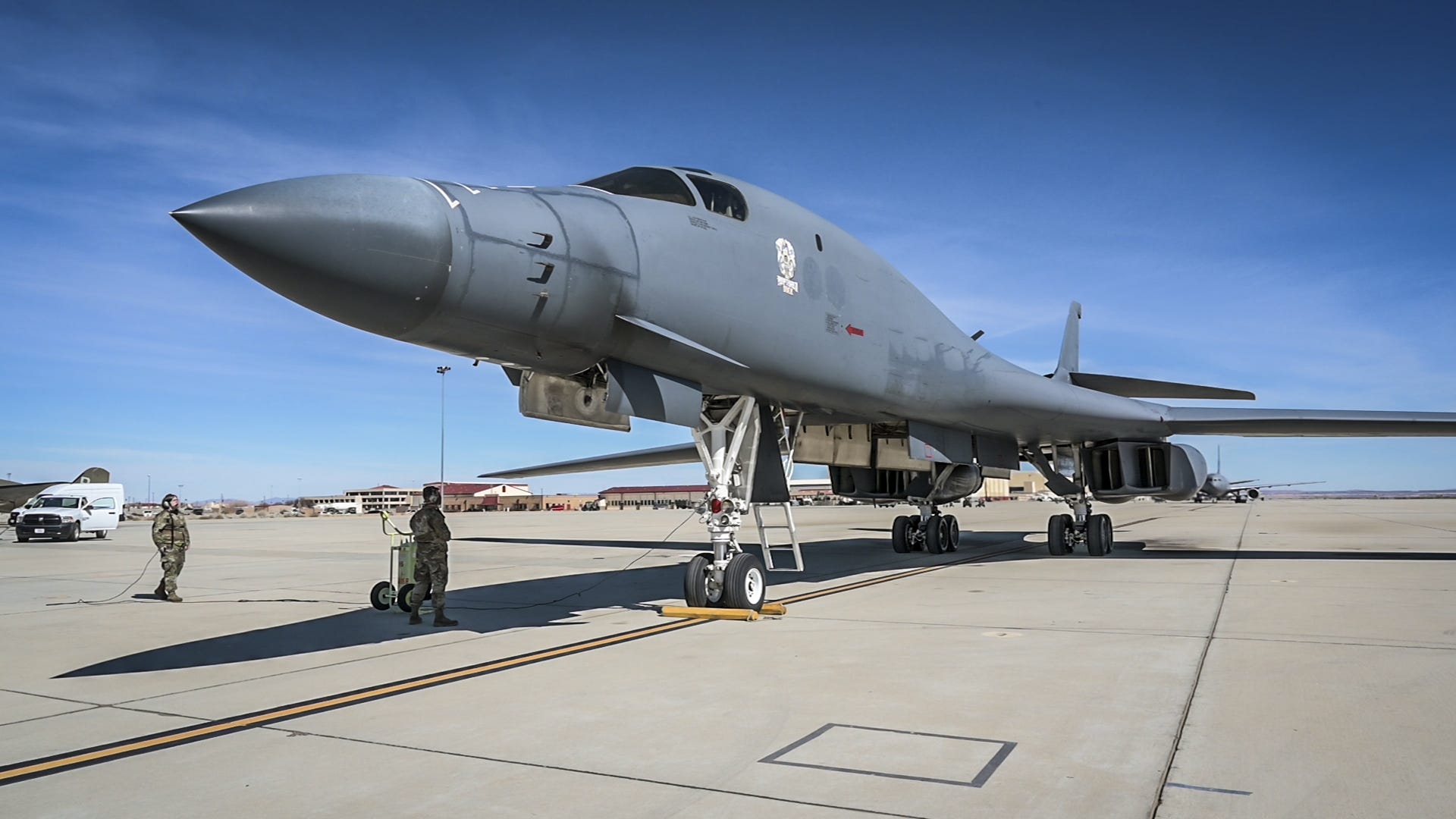
US Air Force/Airman Jonah Fronk
- The Air Force is divesting B-1B bombers, aiming to retire the fleet by the end of the 2030s.
- At least one of the outgoing bombers will find new life as a lab to help keep other B-1s flying.
- See more stories on Insider's business page.
In February, the Air Force announced that it will begin retiring the B-1B Lancer from service by divesting 17 bombers from the current fleet of 62.
The divestment is being done to cut costs, streamline modernization and maintenance for other aircraft, and prepare for the introduction of the Air Force's future B-21 Raider bomber.
"Beginning to retire legacy bombers, to make way for the B-21 Raider, is something we have been working toward for some time," Gen. Tim Ray, head of Air Force Global Strike Command, said in a release. "We're just accelerating planned retirements."
Four of the bombers will be kept in Type 2000 storage, meaning they can be returned if needed after maintenance but will most likely be stripped for parts. (The Air Force has already resurrected two B-52s.)
But one B-1 bomber will continue to work during its retirement. After landing at Edwards Air Force Base in California last month, it will become the Edwards Aircraft Ground Integration Lab, or EAGIL.
From nuclear bomber to conventional workhorse

US Air Force/Airman 1st Class Olivar
With a maximum speed of Mach 1.2, B-1 bombers were originally intended to carry out nuclear strikes on targets deep in the Soviet Union.
Their speed and small radar cross-section would enable them to quickly penetrate Soviet airspace and avoid detection by Soviet air defenses and radar, giving them a higher chance of survival than the B-52s.
But the Lancer would never fulfill its intended role. The project's slow development meant that it did not enter service with the Air Force until 1986. In accordance with the Strategic Arms Reduction Treaties, the Lancers have been stripped of the ability to carry nuclear weapons. Russian officials inspect them annually to ensure they have not been and cannot be converted back.
But the bomber, affectionately known as the "Bone," has become an Air Force workhorse, conducting bombing missions in Kosovo, Afghanistan, Iraq, Libya, and Syria. The B-1 has even conducted close-air-support missions.
B-1s flew roughly as many missions as B-52s during the initial air campaign in Afghanistan and actually dropped more bombs, including twice as many guided Joint Direct Attack Munitions (JDAMS) as all other US aircraft combined.
Lancers were particularly useful against ISIS during the devastating Siege of Kobani between September 2014 and March 2015. Over five months, B-1s dropped some 660 bombs on ISIS targets, killing over 1,000 militants, according to the Air Force.
Retirement

Staff Sgt. Bennie J. Davis III/USAF/Handout via REUTERS
In 2006, the B-1 replaced the B-52 as the sole bomber conducting continuous operations in the Middle East, and it remained so until operations against ISIS ramped up in 2016.
Mechanically, the constant deployments and bombing missions have taken a toll on the Lancers. In 2017, the Air Force reported that only half of the 62 bombers were combat-ready. In 2019, Air Force Global Strike Command said only seven were fully mission-capable.
"We're just beating the heck out of them, deploying them, deploying them," Gen. John Hyten told the Senate Armed Services Committee in July 2019, calling the bomber "the workhorse of the Air Force today."
The Air Force estimates that the cost of getting some B-1s back into shape could be as high as $30 million apiece.
With a larger fleet of B-52s that are in better condition, and with the B-21 expected to enter service around 2026, the Air Force decided to retire the B-1s over time, with the last expected to be retired in the mid-to-late 2030s.
The 17 being retired now will allow the Air Force to focus on maintaining the rest of its B-1s as well as the remaining B-52s, which are expected to keep flying until at least 2050.
"Retiring aircraft with the least amount of usable life allows us to prioritize the health of the fleet and crew training," Ray said in the release. "Our ability to balance these priorities will make us more capable and lethal overall."
EAGIL and the future

US Air Force/Giancarlo Casem
That still leaves over a decade of life for the remaining 45 Lancers - many of which need maintenance and upgrades.
To support these efforts, one Lancer, tail number 86-0099, was sent to Edwards Air Force Base to be converted into a non-flyable integration lab to test future upgrades. Known as EAGIL, it will help keep other B-1s flying.
"We plan to do avionics software, weapon and hardware testing, new equipment fit checks, prototyping efforts and EAGIL will be used to support weapon load training, egress training, as well as aircraft familiarization for new personnel," Stephen Salas, B-1 platform lead for the Air Force unit tasked with bomber testing, said in a release.
EAGIL will save 100 to 200 days of scheduled downtime for the two flyable B-1s currently used for testing, Salas added.
The Air Force is currently testing the B-1's ability to launch long-range externally mounted cruise missiles like the Joint Air-to-Surface Standoff Missile (JASSM). In December, a B-1 successfully fired a JASSM mounted on a pylon on its fuselage.
While each aircraft's annual flight hours have reportedly been capped, the B-1 fleet is still hard at work.
In late February, four B-1s landed in Norway for the first time on a deployment that included first-ever landings in Poland and above the Arctic Circle, as well as a flight around Iceland with two B-2 Spirit stealth bombers.
Twice this month, B-1s have flown from Texas and South Dakota to conduct missions around the Aegean Sea - a nearly 13,000-mile round-trip flight.